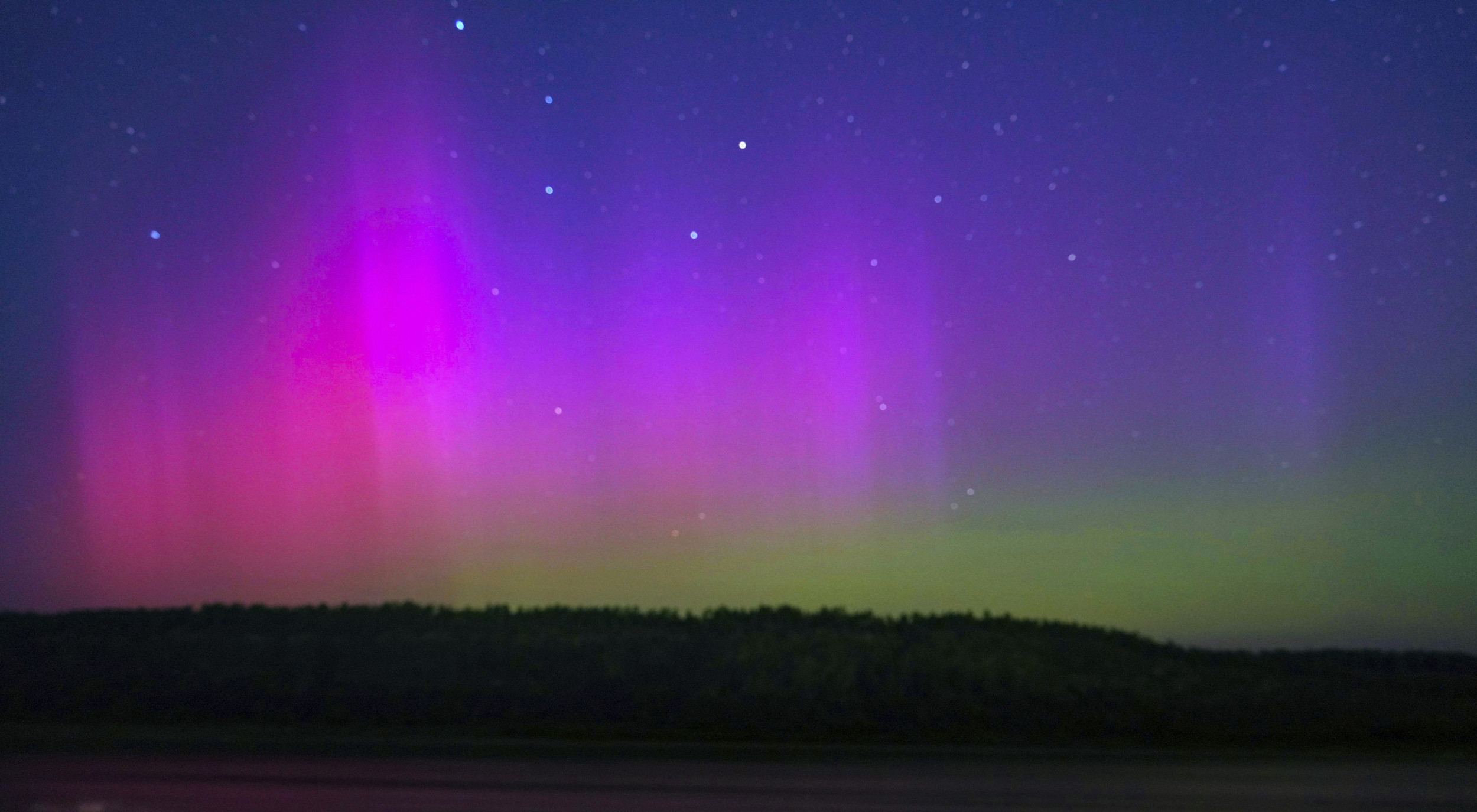
A severe geomagnetic storm watch issued by National Oceanic and Atmospheric Administration (NOAA) is in effect for June 2, with the agency warning that the powerful solar event could disrupt critical infrastructure.
Shawn Dahl, a space weather forecaster at NOAA’s Space Weather Prediction Center (SWPC), told Newsweek in an email Saturday: “We are already taking measures to notify FEMA [Federal Emergency Management Agency] for their awareness only at this time” so the agency can make “preparation[s] to deal with and manage geomagnetic induced currents that will likely develop in high voltage transmission lines,” potentiallyimpacting the nation’s power grid.
Newsweek has reached out to FEMA’s press team for comment via email on Saturday.
Why It Matters
Geomagnetic storms are classified by the NOAA on a scale of G1 (minor) to G5 (extreme), with G5 being the most powerful and least common.
The fluctuations in our planet’s magnetic field during a geomagnetic storm create electric fields on the Earth’s surface. When these electric fields interact with conductive materials like rock, soil or water, they induce electrical currents in the ground.
These currents, coupled with the electric fields in the ground, can lead to geomagnetically induced currents (GICs), which can travel through power grid systems. These GICs overload transformers and other electrical components, leading to potential damage or large-scale power outages.

VCG/VCG via AP
What To Know
On Saturday, NOAA issued a geomagnetic storm watch with a strong (G3) alert for June 1, a severe (G4) alert for June 2 and a moderate (G2) alert for June 4.
The warning comes after “a powerful coronal mass ejection (CME) erupted from the Sun” on May 30. It is expected to arrive at Earth on Sunday, June 1. CME is an “eruption of solar material and magnetic fields,” according to NOAA.
The warning levels are “our best guesses” at the moment, Dahl told Newsweek, adding that “essentially we have to wait until the CME arrives 1 million miles from Earth at the DSCOVR/ACE spacecraft solar wind observatories to know exactly what the CME structure and magnetic strength and orientation actually are.”
CME arrival at Earth is anticipated and a G4 Watch is now in effect for 2 Jun. CME arrival later on 1 Jun could lead to G3, with G4 potential increased on 2 Jun, and as CME passage weakens, G1-G2 still possible on 3 Jun. Full story at https://t.co/1XbPMluPTX pic.twitter.com/XWAb6H77Kw
— NOAA Space Weather Prediction Center (@NWSSWPC) May 31, 2025
He added that if the magnetic field of the CME is “strong and oriented orientated opposite Earth, we are quite confident in G3-G4 levels being reached,” whereas if it is not than the severity becomes less likely.
The effects of a geomagnetic storm can be significant, with NOAA’s watch stating, “detrimental impacts to some of our critical infrastructure technologies are possible, but mitigation is possible.” The infrastructure can be impacted by overload transformers, potentially causing temporary blackouts of the power grid, or interfering with satellites communications and GPS disruptions, among others.
In 1989, a powerful CME caused a geomagnetic storm that knocked out the Hydro-Québec power grid in Canada, leaving millions of people without electricity for hours.
What People Are Saying
Matthew Cappucci, an atmospheric scientist wrote on X, formerly Twitter, on Saturday: “A rare ‘G4’ geomagnetic watch has been hoisted by the Space Weather Prediction Center in Boulder, Colorado – indicating they are unusually confident in direct Earth impacts.”
My Radar Weather posted on X Saturday: “This is a BIG deal! A ‘severe’ geomagnetic storm is coming – and LOTS of Americans might get to see the aurora borealis!”
Dr. Tamitha Skov, a space weather physicist, wrote on X Saturday: “Our Sun finally aims straight for Earth! NASA model predictions show a very fast #solarstorm travelling near 1000 km/s that could hit Earth by midday June 1. A slower storm ahead might cause a slight traffic delay, but G4-levels by June 2 are possible. This means #aurora may be visible deep into mid-latitudes. Considering we expect big flares to continue on Earth’s dayside over the next few days, this means both the dayside and nightside radio bands will remain noisy, with periodic disruptions.”
What Happens Next?
Geomagnetic storms can make aurora borealis, or the northern lights, more visible by disrupting the Earth’s magnetic fields. NOAA says the aurora may be visible for the northern half of the country, as well as other sites.
The SWPC will continue updating information about the solar event throughout the day and leading up to its expected impact.





